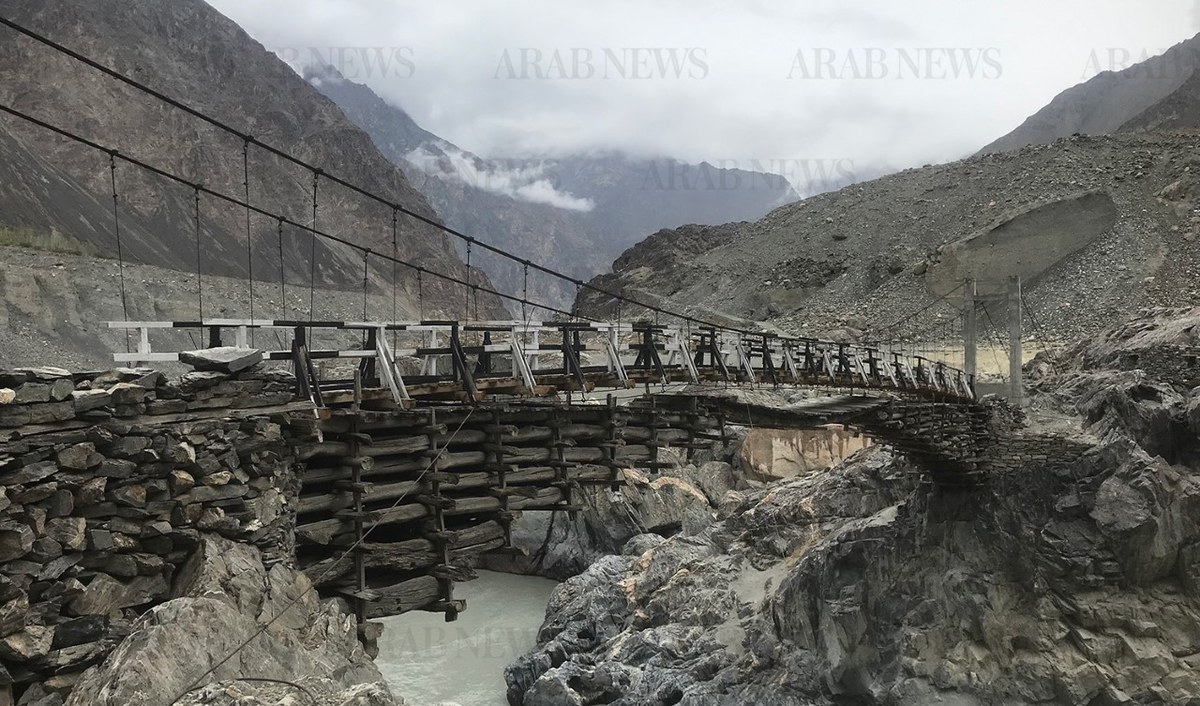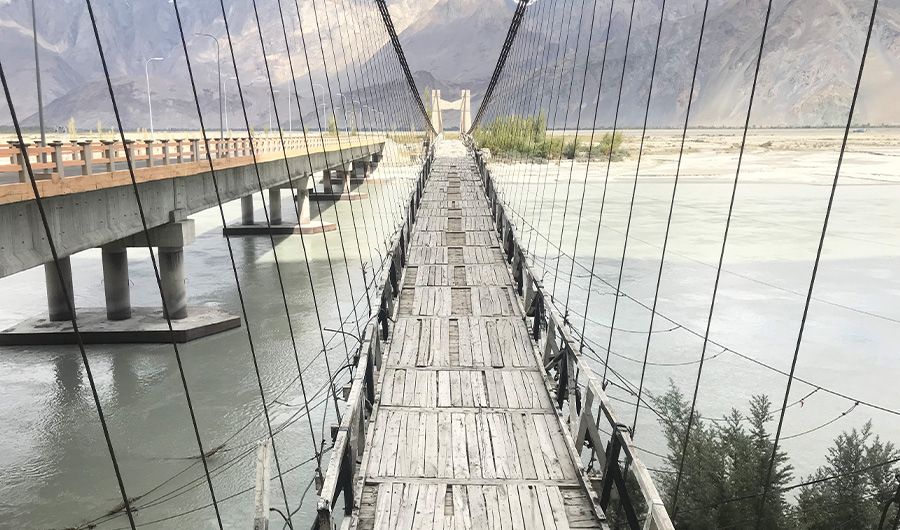KHAPLU: Suspension bridges are disappearing fast and being converted into reinforced cement concrete (RCC) overpasses in Pakistan’s northern Gilgit-Baltistan region, with locals saying the conversion has reduced travel time and resolved a number of issues faced by them over the years.
Pakistan’s mountainous Gilgit-Baltistan, an impoverished part of the larger Kashmir region, is the South Asian country’s gateway to China and home to a key artery of the multibillion-dollar China-Pakistan Economic Corridor (CPEC).
The mountainous region, bordering Afghanistan and China, comprises valleys, glacial lakes and is home to five out of the world’s 14 mountain peaks above 8,000 meters. For years, the only means to cross rivers in the region had been rafts, called ‘Zakh’ in the local language, but then locals built a cantilever bridge in the Frano village of Chorbat valley in the late 1930s.

This picture taken on September 25, 2022 shows Apo Ali Shah bridge, built in 1930s, in Frano village of Gilgit-Baltistan, Pakistan. (AN photo)
It is believed to be the first ever cantilever bridge in the Baltistan region which was built using poplar trees, under the supervision of a farmer, Apo Ali Shah, according to Hajji Muhammad Iqbal, a local historian and former provincial lawmaker. The bridge was also named after Shah.
“The construction of Apo Ali Shah bridge started in 1936 and culminated in 1940. The local farmer built this bridge according to his own architecture and without using a single nail. Till 1970, no other bridge had been built in the district and it was used to reach different valleys,” Zakawat Ali, an executive engineer at Public Works Department in Ghanche district, told Arab News last week.
“It was feasible only for light traffic and limited weight. Now RCC bridges are for all kinds of traffic and people belonging to all walks of life benefit from these bridges.”

A view of Siari suspension bridge located in Siari village of Gilgit-Baltistan, Pakistan on September 25, 2022. (AN photo).
Ali said there were 63 suspension bridges in Ghanche, but 22 of them have been converted into RCC overpasses over the years. Conversion of four more suspension bridges is underway in the district, he added.
Fida Hussain, a resident of Saling valley of Ghanche, said the inauguration of Saling RCC overpass in 2020 had gotten them out of misery.
“A loaded truck can now enter our village which was not possible earlier,” Hussain told Arab News. “Tourist influx into Saling valley and the value of lands have increased as well.”

A view of a suspension bridge located in Saling valley that was closed for traffic after the construction of an RCC bridge in Ghanche district of Gilgit-Baltistan, Pakistan on September 27, 2022. (AN photo)
Musa Ali, another resident of Saling valley who runs a small shop for the last 17 years, says previously he had to spend hours visiting Khaplu, the headquarter of Ghanche district, to source goods.
“We had to wait for hours to cross the suspension bridge, especially when the winds blew,” he said. “Now we can easily cross the RCC bridge with unlimited weight. Thank God, we are happy as the RCC bridge has made our life easy.”












